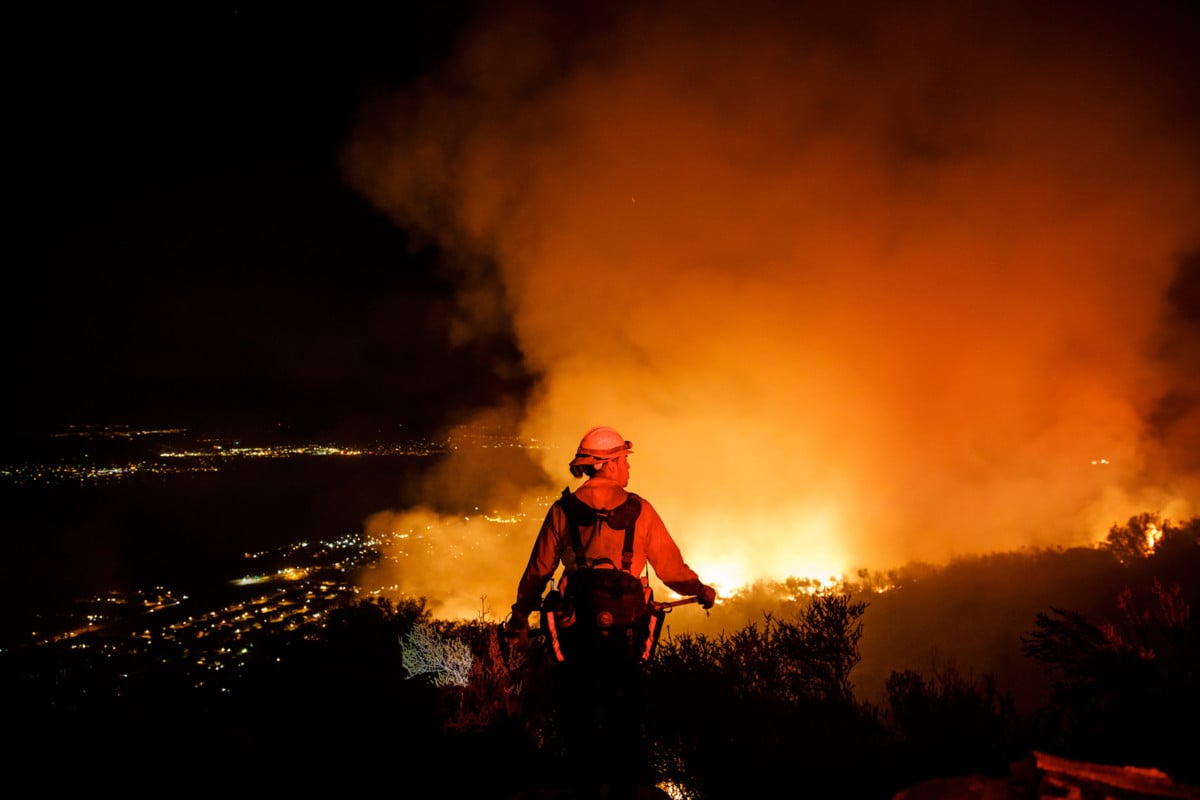Sixth
Mass Extinction Ushers In Record-Breaking Wildfires and Heat
Dahr
Jamail


20
August, 2018
There
have been five mass extinction events on Earth, and it is
a scientific
fact we
are well into the sixth mass extinction event.
By
far, the worst of these was the Permian mass extinction that occurred
roughly 252 million years ago. That one annihilated 95 percent of all
life on Earth.
During
the Permian mass extinction, global warming caused by a massive
amount of CO2 released from volcanism warmed both the oceans and the
atmosphere, which then triggered the release of colossal amounts of
methane that had been trapped underneath the ice in the Arctic. This
caused an even greater spike in planetary warming, which wiped out
nearly all life on Earth.
In
our current mass extinction event, however, rather than the
CO2-caused warming coming from a volcano, it is anthropogenic
(human-caused), and the climate is not just warming, it is disrupted.
And this time, rather than the process taking tens of thousands of
years as it did during the Permian mass extinction, humans are
increasing atmospheric CO2 levels far, far more rapidly.
Whether
or not humans go extinct remains to be seen, but there is no denying
that sustaining 7.6
billion humans
while we are forcing the extinction of between 150-200
other species each
day and have pushed Earth’s climate out of its natural state is
very much in question. I’ve spoken to prestigious scientists both
on and off the record who believe that sooner rather than later,
global population will be reduced to around 1 billion humans.
Whichever
scenario runs its course, we are all facing massive loss in the
future. It is only then can we decide what is truly important in our
lives, and how to comport ourselves as we go through our days.
Just
as warming seas caused the release of methane stores in the Arctic,
driving the Permian mass extinction, we are now facing what appears
to be a modern-day equivalent of this phenomenon.
Sea
surface temperatures in the Arctic are warming at stunning rates. To
give you an idea, look at this blog
containing images showing sea surface temperatures in
one specific location near Svalbard for July 6 for each of the
following years:
2014: -0.8°C or 30.6°F
2015: 6.2°C or 43.2°F
2016: 8.3°C or 47.0°F
2017: 14.4°C or 57.9°F
2018: 16.6°C or 61.9°F
2014: -0.8°C or 30.6°F
2015: 6.2°C or 43.2°F
2016: 8.3°C or 47.0°F
2017: 14.4°C or 57.9°F
2018: 16.6°C or 61.9°F
On
July 30, 2018, the sea
surface near Svalbard was as warm as 19.3°C or
66.8°F — 13.9°C or 25°F warmer than it was during 1981-2011.
Elsewhere
in the Arctic, Sweden’s highest mountain is no longer its highest
mountain, thanks largely to anthropogenic climate disruption (ACD),
as the top 13 feet of ice melted
off of it.
On July 30, a Norwegian town 350 miles into the Arctic Circle saw the
temperature reach 90°F.
The
trend is clear, and should be very alarming to anyone reading this.
Christie
Aschwanden, writing for FiveThirtyEight,
provided this synopsis on July 19:
It’s only July, but it has already been a long, hot spring and summer. The contiguous US endured the warmest May ever recorded, and in June, the average temperature was 1.7 degrees Celsius (3.0 degrees Fahrenheit) above the 20th century average [June was Earth’s fifth warmest June ever recorded, and the US National Oceanic and Atmospheric Administration found that the only warmer June months on record were 2016, 2015, 2017 and 2014, in that order]. Iowa, New Mexico and Texas set record highs for their minimum temperatures in June, and as of July 3, nearly 30 percent of the Lower 48 was experiencing drought conditions. And it’s not just the US. During the first five months of 2018, nearly every continent experienced record warm temperatures, and May 2018 marked the 401st consecutive month in which temperatures exceeded the 20th century average.
As
if to underscore all of this, leading scientists recently published
a study warning
a domino effect of climate events could easily move Earth into a
“hothouse” state, making any efforts to reduce emissions
increasingly futile. Their paper combines the consequences of 10
climate change processes (methane release in the Arctic, the melting
of the Greenland ice sheet and the loss of coral reefs as a few
examples), as each of these is a feedback loop that could amplify the
other nine.
While
the authors stress that their analysis was not conclusive,
they warned
the Guardian that
this trajectory “would almost certainly flood deltaic environments,
increase the risk of damage from coastal storms, and eliminate coral
reefs (and all of the benefits that they provide for societies) by
the end of this century or earlier.”
Another
climate researcher, Phil Williamson, put
it this way:
“In the context of the summer of 2018, this is definitely not a
case of crying wolf, raising a false alarm: the wolves are now in
sight.”
To
read article GO
HERE
No comments:
Post a Comment
Note: only a member of this blog may post a comment.